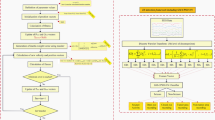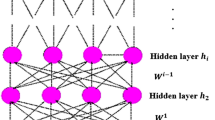Abstract
Accurate and rapid pattern recognition of epilepsy from intracranial electroencephalogram (iEEG) recordings is important for medical diagnostics. In this paper, three algorithms based on discrete wavelet transform (DWT) analysis and parallel probabilistic neural network, SA-PNN, SA-PPNN, and LSA-PPNN, are presented to identify iEEG recordings and detect epileptic seizures. Simulated annealing (SA) and local simulated annealing (LSA) are utilized to optimize network parameters of probabilistic neural network classifier, respectively. The combinations of different features are utilized as the input vectors of classifiers to complete classification tasks. Experiments are conducted to deal with five different classification tasks. Compared with non-parallel probabilistic neural network algorithm (SA-PNN), the running time of parallel probabilistic neural network algorithm (SA-PPNN) is shortened by 2.18 times. Compared with SA-PPNN, the average operating time of LSA-PPNN is reduced by 9.97 times. The reason is that LSA-PPNN trains and optimizes parameters with local data firstly and then brings the parameters into the global training data sets to train the network for a test. As the amount of data increases, the superiority over LSA-PPNN is getting more distinct. Our methods are also compared with other existing relative research. Experimental results prove that our methods are much more competitive. In particular, for the classification task C-D, the classification accuracy of our method reaches 83.3%, which is much higher than previous results.






Similar content being viewed by others
References
(2014) Health communities. http://www.healthcommunities.com/epilepsy-seizures/seizures-phases.html
Raghu S, Sriraam N (2017) Optimal configuration of multilayer perceptron neural network classifier for recognition of intracranial epileptic seizures. Expert Syst Appl 89:205–221
Wilson S B, Scheuer M L, Plummer C, Young B, Pacia S (2003) Seizure detection: correlation of human experts. Clin Neurophysiol 114(11):2156–2164
Guo L, Rivero D, Pazos A (2010) Epileptic seizure detection using multiwavelet transform based approximate entropy and artificial neural networks. J Neurosci Methods 193(1):156–163
Srinivasan V, Eswaran C, Sriraam N (2007) Approximate entropy-based epileptic eeg detection using artificial neural networks. IEEE Trans Inf Technol Biomed 11(3):288–295
Acharya U R, Molinari F, Sree S V, Chattopadhyay S, Ng K-H, Suri J S (2012) Automated diagnosis of epileptic eeg using entropies. Biomed Signal Process Control 7(4):401–408
Kumar Y, Dewal M L, Anand R S (2012) Relative wavelet energy and wavelet entropy based epileptic brain signals classification. Biomed Eng Lett 2(3):147–157
Polat K, Güneş S (2008) Artificial immune recognition system with fuzzy resource allocation mechanism classifier, principal component analysis and fft method based new hybrid automated identification system for classification of eeg signals. Expert Syst Appl 34(3):2039–2048
Mousavi SR, Niknazar M, Vahdat B V (2008) Epileptic seizure detection using ar model on eeg signals. In: 2008 Cairo International Biomedical Engineering Conference. IEEE, pp 1–4
Zhan Y, Halliday D, Jiang P, Liu X, Feng J (2006) Detecting time-dependent coherence between non-stationary electrophysiological signals—a combined statistical and time–frequency approach. J Neurosci Methods 156(1-2):322–332
Kumar Y, Dewal ML, Anand RS (2014) Epileptic seizures detection in eeg using dwt-based apen and artificial neural network. SIViP 8(7):1323–1334
Sharmila A, Geethanjali P (2016) Dwt based detection of epileptic seizure from eeg signals using naive bayes and k-nn classifiers. Ieee Access 4:7716–7727
Nicolaou N, Georgiou J (2012) Detection of epileptic electroencephalogram based on permutation entropy and support vector machines. Expert Syst Appl 39(1):202–209
Tang Y, Durand D M (2012) A tunable support vector machine assembly classifier for epileptic seizure detection. Expert Syst Appl 39(4):3925–3938
Naseer N, Hong K-S (2015) fnirs-based brain-computer interfaces: a review. Front Human Neurosci 9:3
Orhan U, Hekim M, Ozer M (2011) Eeg signals classification using the k-means clustering and a multilayer perceptron neural network model. Expert Syst Appl 38(10):13475–13481
Andrzejak R G, Lehnertz K, Mormann F, Rieke C, David P, Elger C E (2001) Indications of nonlinear deterministic and finite-dimensional structures in time series of brain electrical activity: Dependence on recording region and brain state. Phys Rev E 64(6):061907
Adeli H, Zhou Z, Dadmehr N (2003) Analysis of eeg records in an epileptic patient using wavelet transform. J Neurosci Methods 123(1):69–87
Mallat S G (1989) A theory for multiresolution signal decomposition: the wavelet representation. IEEE Transa Pattern Anal Mach Intell 11(7):674–693
Webster R, Lark RM (2018) Analysis of variance in soil research: let the analysis fit the design. Eur J Soil Sci 69(1):126–139
Specht D F (1990) Probabilistic neural networks. Neural Netw 3(1):109–118
Huang C-J, Liao W-C (2003) A comparative study of feature selection methods for probabilistic neural networks in cancer classification. In: Proceedings. 15th IEEE International Conference on Tools with Artificial Intelligence. IEEE, pp 451–458
Pang CCC, Upton ARM, Shine G, Kamath M V (2003) A comparison of algorithms for detection of spikes in the electroencephalogram. IEEE Trans Biomed Eng 50(4):521– 526
Gong C, Zhang X, Niu Y (2020) Identification of epilepsy from intracranial eeg signals by using different neural network models. Comput Biol Chem:107310
Besag FMC, Vasey M J (2018) Prodrome in epilepsy. Epilepsy Behav 83:219–233
Tomlinson S B, Khambhati A N, Bermudez C, Kamens R M, Heuer G G, Porter B E, Marsh E D (2018) Alterations of network synchrony after epileptic seizures: An analysis of post-ictal intracranial recordings in pediatric epilepsy patients. Epilepsy Res 143:41–49
Leung Stephen CH, Zheng J, Zhang D, Zhou X (2010) Simulated annealing for the vehicle routing problem with two-dimensional loading constraints. Flexible Serv Manuf J 22(1-2):61–82
Li M, Chen W, Zhang T (2016) Automatic epilepsy detection using wavelet-based nonlinear analysis and optimized svm. Biocybern Biomed Eng 36(4):708–718
Sharma R, Pachori R B (2015) Classification of epileptic seizures in eeg signals based on phase space representation of intrinsic mode functions. Expert Syst Appl 42(3):1106–1117
Shoeibi A, Ghassemi N, Khodatars M, Jafari M, Hussain S, Alizadehsani R, Moridian P, Khosravi A, Hosseini-Nejad H, Rouhani M et al (2020) Epileptic seizure detection using deep learning techniques: A review. arXiv:2007.01276
Acknowledgements
This work was supported by the National Natural Science Foundation of China [grant numbers 61872325]; the Fundamental Research Funds for the Central Universities [grant number 2652019028].
Author information
Authors and Affiliations
Corresponding author
Additional information
Publisher’s note
Springer Nature remains neutral with regard to jurisdictional claims in published maps and institutional affiliations.
This work was supported by the National Natural Science Foundation of China [grant numbers 61872325]; the Fundamental Research Funds for the Central Universities [grant number 2652019028].
Appendix:
Appendix:
The best performance achieved by SA-PNN, SA-PPNN, and LSA-PPNN is shown in Table 7. The average CA of SA-PNN, SA-PPNN, and LSA-PPNN is quite similar (93.35%, 93.35% and 93.06%, respectively). The speedup between SA-PNN and SA-PPNN, SA-PNN, and LSA-PPNN is shown in Table 8. For five classification tasks, the highest speedups between SA-PNN and SA-PPNN, are 2.06, 2.16, 2.12, 2.39, and 2.41 respectively. The highest speedups between SA-PNN and LSA-PPNN, are 7.65, 7.99, 8.39, 12.51, and 12.41 respectively.
Rights and permissions
About this article
Cite this article
Gong, C., Zhou, X. & Niu, Y. Pattern recognition of epilepsy using parallel probabilistic neural network. Appl Intell 52, 2001–2012 (2022). https://doi.org/10.1007/s10489-021-02509-w
Accepted:
Published:
Issue Date:
DOI: https://doi.org/10.1007/s10489-021-02509-w




